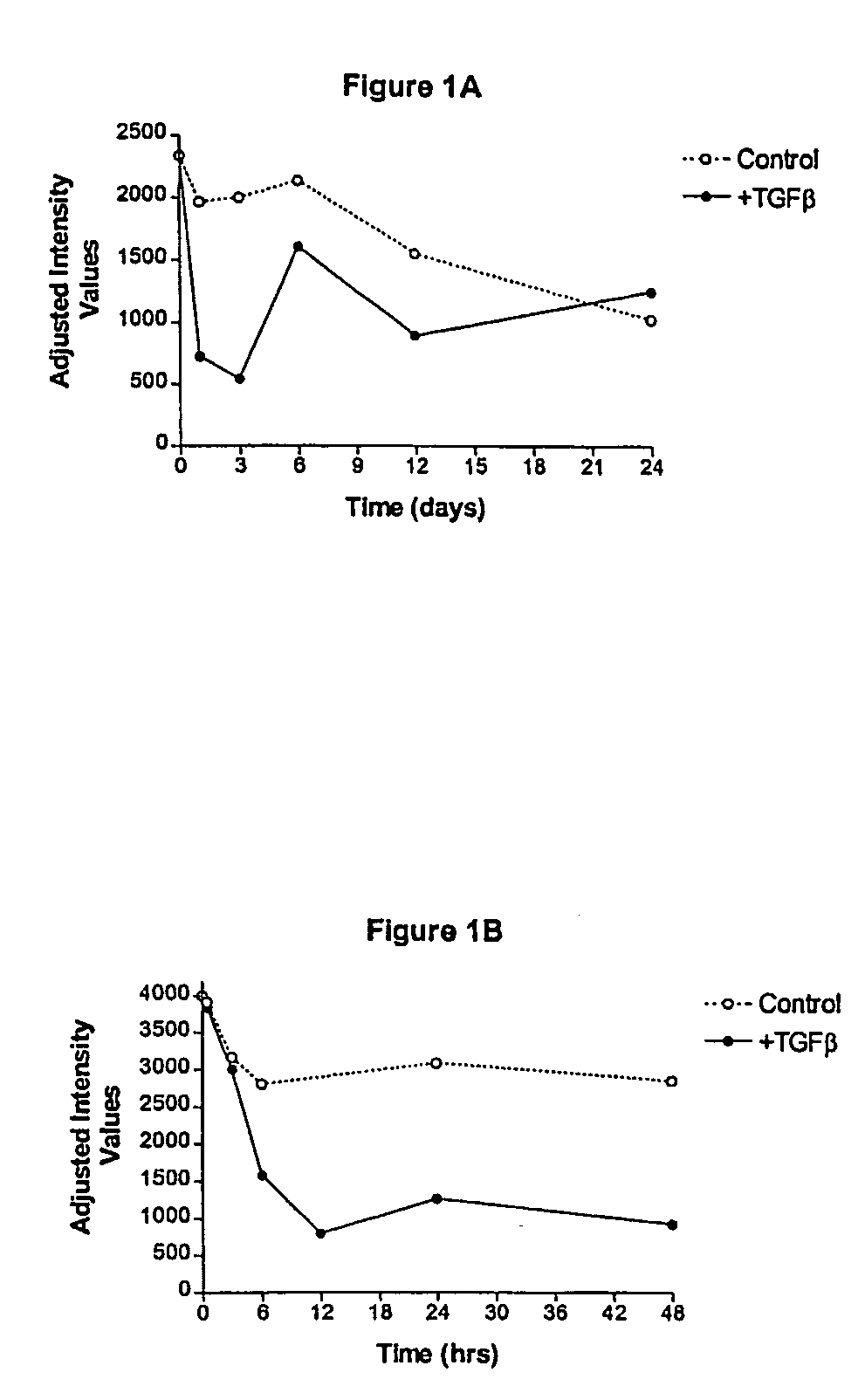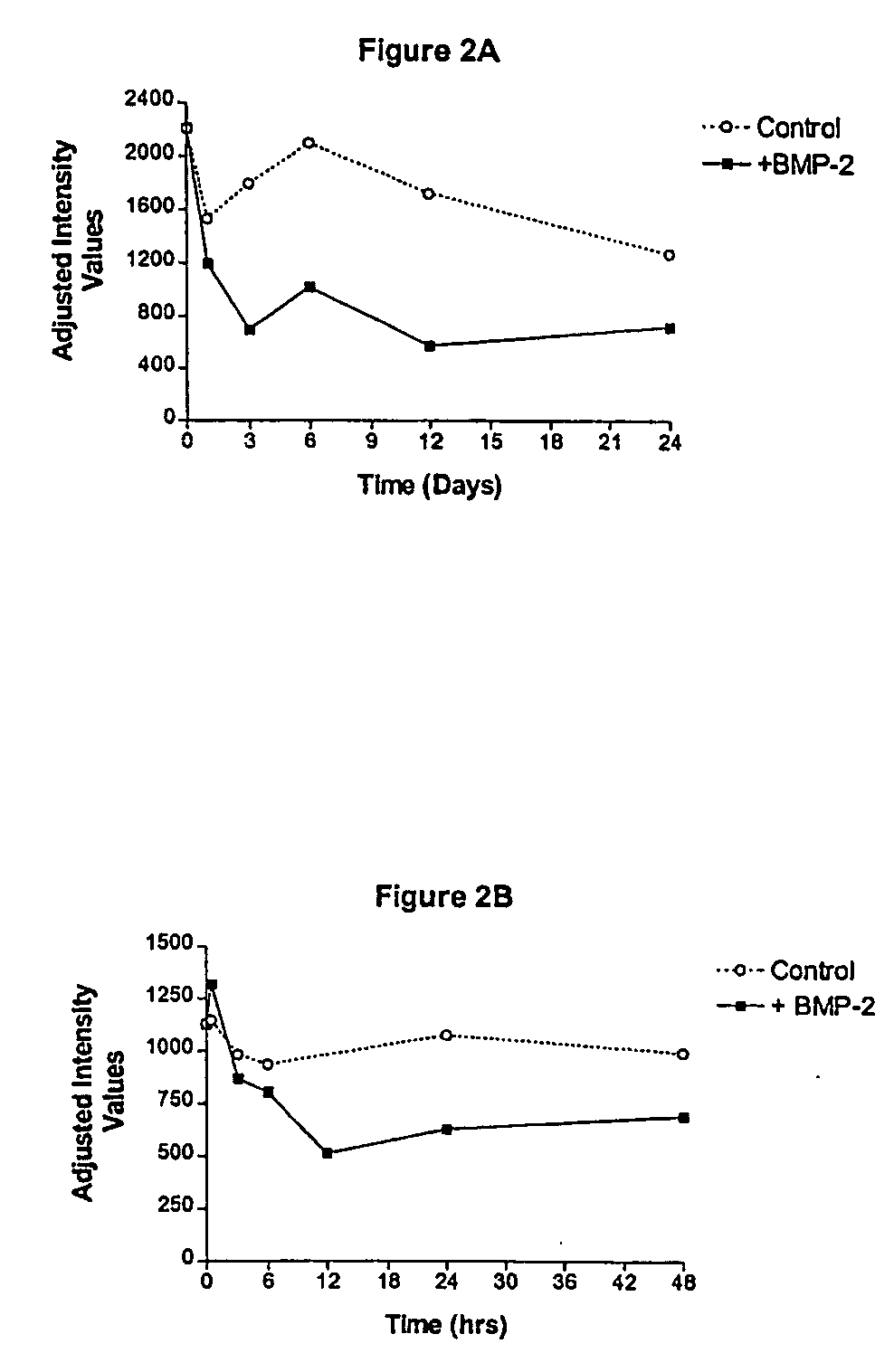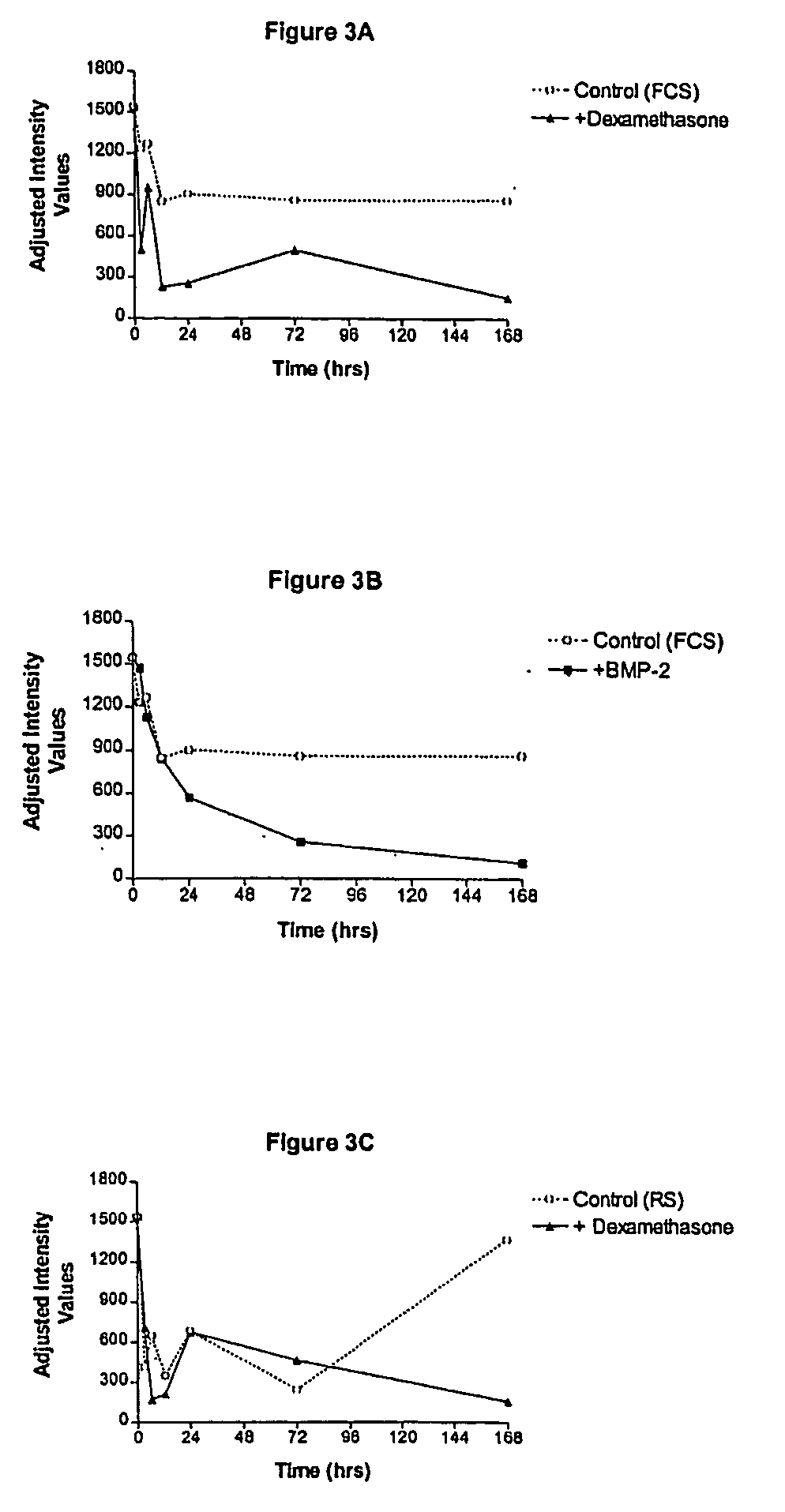Gene associated with bone disorders
a gene and disease technology, applied in the field of gene associated with bone disorders, can solve the problems of few treatments available to modulate the formation and resorption process of bone maintenance and development, and achieve the effects of increasing bone density, decreasing expression or activity, and increasing bone density
- Summary
- Abstract
- Description
- Claims
- Application Information
AI Technical Summary
Benefits of technology
Problems solved by technology
Method used
Image
Examples
example 1
Cloning of Full Length Human Gene
[0156] The full length cDNA having SEQ ID NO: 1 was obtained by the solution hybridization method. Briefly, a gene-specific oligonucleotide was designed based on the sequence of an EST fragment identified by READS analysis (Prashar et al. (1996) 93, 659-663). The oligonucleotide was labeled with biotin and used to hybridize with 5 μg of single strand plasmid DNA (cDNA recombinants) from a human resting mast cell library following the procedures from the Gene Trapper kit (Life Technologies). The hybridized cDNA was separated by streptavidin-conjugated beads and eluted by Tris-EDTA buffer. The eluted cDNA was converted to double strand plasmid DNA and used to transform E. coli cells (DH5α). Clones were screened by PCR using gene specific primers designed from the EST sequence to identify positive clones. After positive selection, the cDNA clone was subjected to DNA sequence.
[0157] The nucleotide sequences of the full-length human cDNA corresponding t...
example 2
Down-Regulation of Expression in hFSC
[0158] Human Fetal Stromal Cells (hFSC) were isolated from the bone marrow of a twenty-week human embryo. hFSCs are derived from a primary culture and represent a heterogeneous population of osteoprogenitor cells. hFSCs exhibit a high replicative capacity, with a doubling time of approximately twenty hours. hFSCs retain a spindle-shaped morphology and have a uniform attachment throughout subcultivation. hFSCs can be sub-cultured up to twelve passages while retaining both proliferative and osteogenic capability.
[0159] hFSCs used for READS analysis or Q-PCR were cultured in Dulbecco's Modified Eagle Medium (DMEM)-high glucose or DMEM-low glucose plus 10% fetal bovine serum, respectively, at 37° C. in a humidified atmosphere containing 95% air and 5% carbon dioxide in the absence and presence of the indicated treatment. RNA was extracted from the cells at thirty minutes, three hours, six hours, twelve hours, twenty-four hours, forty-eight hours, t...
example 3
Quantitative RT-PCR Analysis of Expression in hFSC and hMSC
[0170] Both human fetal stromal cells (hFSC) and hMSC were used for this study as in the READS experiments. Briefly, PCR primers and TaqMan probes were designed using the DNA sequences provided by sequence analysis of the nucleic acid molecule of SEQ ID NO: 1. Experimental conditions were as follows: hFSC were cultured in vitro and were left untreated for up to twenty-four days, or were treated with the osteogenic agents TGF-β (1 ng / ml of culture media) or BMP-2 (300 ng / ml) for the same time period.
[0171] Cells in each of the treatment groups were harvested at various time points after addition of TGF-β or BMP-2. Total RNA was isolated from the cells using Trizol® and the RNA was quantitated using a spectrophotometer set at 260 nm. Ten ng of total RNA was assayed in duplicate using the TaqMan® assay (Perkin-Elmer) in biplex format where each target gene in each RNA sample was assayed versus a reference mRNA which was shown...
PUM
| Property | Measurement | Unit |
|---|---|---|
| time period | aaaaa | aaaaa |
| time period | aaaaa | aaaaa |
| time | aaaaa | aaaaa |
Abstract
Description
Claims
Application Information
 Login to View More
Login to View More - R&D
- Intellectual Property
- Life Sciences
- Materials
- Tech Scout
- Unparalleled Data Quality
- Higher Quality Content
- 60% Fewer Hallucinations
Browse by: Latest US Patents, China's latest patents, Technical Efficacy Thesaurus, Application Domain, Technology Topic, Popular Technical Reports.
© 2025 PatSnap. All rights reserved.Legal|Privacy policy|Modern Slavery Act Transparency Statement|Sitemap|About US| Contact US: help@patsnap.com



